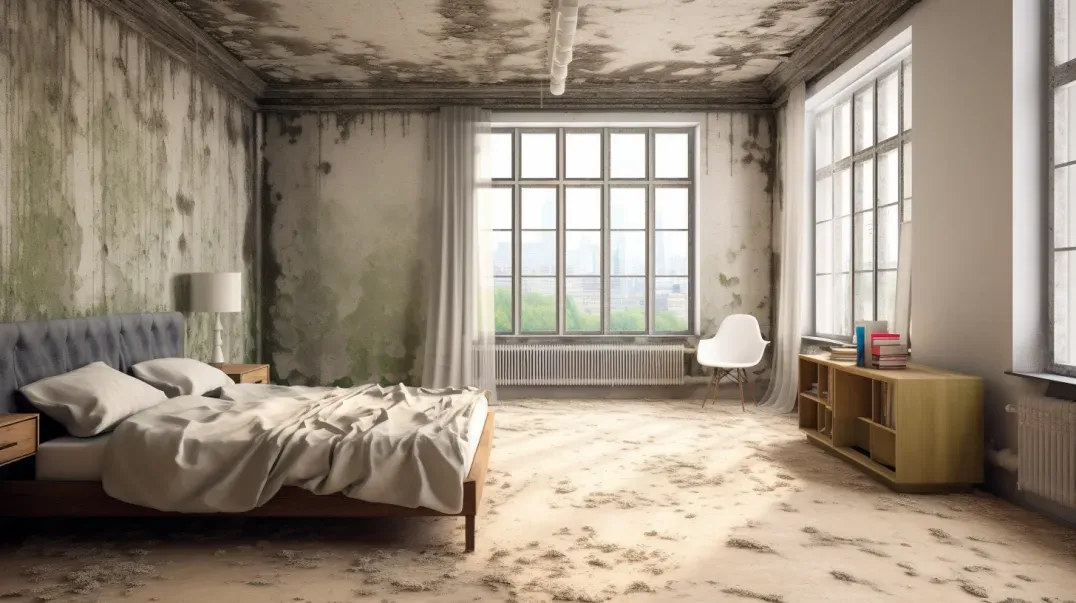Mold Testing Kits for Home Use
n the quest to maintain a healthy and safe living environment, the importance of mold detection in homes cannot be overstated. This blog post aims to shed light on why detecting mold is a critical aspect of home maintenance and how mold testing kits can be invaluable tools for homeowners. Mold, often unseen, can lurk in various parts of a home, especially in areas prone to moisture, such as bathrooms, kitchens, basements, and crawl spaces. Left unchecked, mold can not only damage the structure of your home but also pose significant health risks to its inhabitants.
Understanding the presence and extent of mold growth is the first step in effective mold management. This is where mold testing kits come into play. These kits empower homeowners to conduct preliminary assessments of their living spaces, providing a convenient and cost-effective way to identify potential mold issues before they escalate into larger problems. By using these kits, homeowners can gain insights into the types of mold present and the severity of the infestation, guiding them in taking appropriate remediation steps.
In this post, we will explore the various facets of mold detection, emphasizing the utility of mold testing kits. From identifying early signs of mold to understanding how to effectively use these kits, we aim to equip you with the knowledge and tools necessary to tackle mold issues proactively. Join us as we delve into the world of mold detection, highlighting the pivotal role it plays in preserving the health of your home and family.
Understanding Mold and Its Impacts on Health and Home
Mold is a common issue in many homes, and understanding its nature and the risks it poses is crucial for maintaining a healthy living environment. This section provides basic information about mold, the conditions that promote its growth, and an overview of the health and home risks associated with mold.
What is Mold?
Mold is a type of fungus that can be found both indoors and outdoors. It plays a vital role in nature by breaking down dead organic matter, but it can become problematic when it grows unchecked in homes.
Key points about mold include:
- Growth Conditions: Mold thrives in moist, warm, and humid conditions. It commonly grows in areas with water damage, high humidity, or inadequate ventilation, such as bathrooms, kitchens, basements, and crawl spaces.
- Appearance: Mold can appear in various colors, including black, white, green, or yellow, and often has a fuzzy or slimy texture.
- Reproduction: Mold reproduces through tiny spores that travel through the air. These spores can easily enter homes through windows, doors, or HVAC systems, or they can be carried indoors on clothing or pets.
Health and Home Risks Associated with Mold
Mold can have significant impacts on both health and the structural integrity of homes:
Health Risks:
- Respiratory Issues: Exposure to mold can cause respiratory problems, such as coughing, wheezing, and in severe cases, asthma attacks.
- Allergic Reactions: Many people are allergic to mold spores, leading to symptoms like sneezing, itching, and runny nose.
- Long-Term Health Effects: Prolonged exposure to certain types of mold can lead to more serious health issues, including chronic lung illnesses.
Risks to Home:
- Structural Damage: Mold can break down the structural integrity of building materials, leading to damage to wood, drywall, and other materials.
- Reduced Property Value: The presence of mold can significantly decrease a home's value and can be a major issue during real estate transactions.
- Costly Remediation: Addressing severe mold infestations can be costly, especially if it involves extensive repairs or professional remediation services.
Types of Mold Testing Kits Available
Mold testing kits are essential tools for homeowners to detect and identify mold in their homes. Understanding the different types of mold testing kits and their uses can help in effectively monitoring and managing mold issues. This section describes the various kinds of mold testing kits, including air testing kits, surface testing kits, and bulk testing kits, along with their specific applications.
Air Testing Kits
- Description: Air testing kits are designed to capture and measure the concentration of mold spores in the air. These kits typically include a sampling device that traps spores on a microscopic slide or culture dish.
- Use: The kit is placed in an area of the home for a specified period, after which the sample is sent to a laboratory for analysis. The results can indicate the types and concentrations of mold spores present in the air, helping to assess the air quality and potential mold issues in the home.
- Application: Air testing kits are particularly useful when there are health concerns related to mold, or when mold is suspected but not visible. They provide a way to measure the severity of mold presence in the indoor environment.
Surface Testing Kits
- How They Work: Surface testing kits are used to collect samples from various surfaces where mold growth is suspected. These kits often include swabs or adhesive tapes that can pick up mold particles from surfaces.
- Application: The collected samples are then sent to a lab for analysis to identify the specific types of mold present on the surfaces. Surface testing is particularly useful for confirming visible mold growth and determining the species of mold for appropriate remediation strategies.
Bulk Testing Kits
- Explanation: Bulk testing involves collecting samples of materials from the home, such as pieces of wallpaper, insulation, or carpet. These samples are then sent to a laboratory for detailed analysis.
- Purpose: Bulk testing helps in identifying the presence of mold within materials, not just on their surface. This type of testing is beneficial when there is a need to assess the extent of mold infiltration in porous materials and to guide the remediation process effectively.
Each type of mold testing kit serves a specific purpose and can be a valuable tool in a homeowner's arsenal for detecting and managing mold. Understanding the capabilities and applications of these kits can empower homeowners to take proactive steps in maintaining a healthy living environment.
How to Use Mold Testing Kits
Mold testing kits are valuable tools for detecting mold in your home. Proper usage and interpretation of these kits are crucial for accurate results. This section provides a step-by-step guide on how to use different types of mold testing kits and advice on interpreting the results.
Step-by-Step Guide to Using a Mold Testing Kit
The process of using a mold testing kit varies depending on the type of kit. Here are general guidelines for the most common types:
Air Testing Kits:
- Setup: Place the air testing kit in the area you suspect mold growth. Ensure the room is closed, and the air is still for accurate sampling.
- Sampling: Activate the kit according to the manufacturer's instructions, usually involving exposing a petri dish or a slide for a specific time to capture airborne spores.
- Sealing and Sending: After the exposure period, seal the sample as directed and send it to the designated laboratory for analysis.
Surface Testing Kits:
- Swabbing: If using a swab kit, gently rub the swab over the suspected mold area without disturbing it too much.
- Tape Lifts: For tape kits, press the adhesive side against the moldy surface to collect spores.
- Packaging and Mailing: Place the sample in the provided container and mail it to the lab for testing.
Bulk Testing Kits:
- Sample Collection: Carefully cut out a small piece of the material (like wallpaper or carpet) where mold is suspected.
- Packaging: Place the sample in a sealable bag or container as provided by the kit.
- Lab Analysis: Send the sample to the lab for a detailed analysis of mold presence and type.
Interpreting the Results
Understanding the results from mold testing kits is crucial for determining the next steps:
- Lab Reports: The laboratory will provide a detailed report of the types and concentrations of mold found in the samples.
- Types of Mold: The report will identify the specific mold species present. Some species may require more urgent remediation than others.
- Concentration Levels: Pay attention to the concentration levels of mold spores, especially in air testing results. High levels indicate a more severe mold problem.
- Health and Safety Considerations: Use the results to assess potential health risks, especially if toxic molds like Stachybotrys (black mold) are present.
- Professional Consultation: For complex or high-concentration mold findings, consult with a mold remediation professional for advice on the best course of action.
Using mold testing kits correctly and understanding the results can provide valuable insights into the mold situation in your home, guiding you in maintaining a healthy living environment.
Pros and Cons of DIY Mold Testing
While DIY mold testing can be a useful tool for homeowners, it's important to understand both its advantages and limitations. This section explores the pros and cons of using home mold testing kits, including their cost-effectiveness and convenience, as well as concerns about accuracy and the need for professional analysis.
Advantages of Home Mold Testing Kits
Home mold testing kits offer several benefits:
- Cost-Effectiveness: DIY mold testing kits are generally more affordable than professional mold inspection services. They provide a cost-effective way for homeowners to initially assess the presence of mold.
- Convenience: These kits are readily available at hardware stores or online and can be used at any time, making them a convenient option for busy homeowners.
- Immediate Results: Some mold testing kits offer immediate results, giving homeowners a quick indication of whether mold spores are present in their home environment.
- Early Detection: DIY kits can be a first step in detecting mold problems early, before they become more serious and costly to remediate.
Limitations and Considerations
However, there are several limitations and considerations to keep in mind:
- Accuracy Concerns: Home mold testing kits may not be as accurate as professional testing. They can sometimes give false positives or negatives, leading to misinterpretation of the mold situation.
- Identification Limitations: DIY kits may not be able to identify specific types of mold or quantify spore concentration accurately. This information is crucial in assessing the severity of the mold problem and potential health risks.
- Professional Confirmation Needed: For a comprehensive assessment and accurate identification of mold types, professional testing is often necessary. Professionals use advanced techniques and equipment for more detailed analysis.
- No Remediation Guidance: While these kits can indicate the presence of mold, they don't provide solutions or guidance on how to address the mold issue. Professional remediation services are usually required for effective mold removal.
Understanding the pros and cons of DIY mold testing kits is essential for homeowners. While these kits can be a useful initial step in detecting mold, they should be complemented with professional testing and remediation services for a complete and effective mold management strategy.
When to Consider Professional Mold Testing
Determining when to opt for professional mold testing over DIY kits is crucial for effective mold management in your home. This section discusses the differences between home testing kits and professional services in terms of accuracy and scope, and outlines specific scenarios where professional expertise is recommended.
Comparing DIY Kits with Professional Testing
Understanding the differences between DIY mold testing kits and professional testing services is key:
- Accuracy and Reliability: Professional mold testing is generally more accurate and reliable than DIY kits. Professionals use advanced equipment and techniques to detect mold, ensuring a comprehensive assessment.
- Scope of Testing: Professional services offer a broader scope of testing, including air, surface, and bulk sampling, and can identify specific mold types and spore concentrations. This level of detail is beyond the capability of most home testing kits.
- Expert Analysis: Professionals provide expert analysis of the test results, offering insights into the severity of the mold issue and potential health risks.
- Remediation Guidance: Unlike DIY kits, professional testing services often come with recommendations for remediation and prevention, providing a complete solution to mold problems.
Scenarios Requiring Professional Expertise
There are several situations where professional mold testing is particularly recommended:
- Large-Scale Infestations: If you suspect a widespread mold problem, professional testing is necessary to determine the full extent of the infestation.
- Health Concerns: If occupants of your home are experiencing health issues that may be related to mold exposure, professional testing can identify specific mold types that may be causing these health problems.
- Post-Remediation Verification: After mold remediation, professional testing is essential to confirm that all mold has been successfully removed.
- Real Estate Transactions: In the context of buying or selling a home, professional mold testing can provide assurance to all parties regarding the mold status of the property.
- Invisible Mold: If you smell mold but cannot see it, professional testing can help locate hidden mold, which DIY kits might miss.
In these scenarios, the expertise, accuracy, and comprehensive approach of professional mold testing are invaluable. It ensures that mold issues are thoroughly addressed, safeguarding the health of your home's occupants and the integrity of your property.
FAQs
Contact Lowcountry Crawlspaces Today!
Lowcountry Crawlspaces will do everything we can to ensure your experience with us is excellent.
Request A FREE Estimate
CHECKOUT RECENT POST



Schedule Your FREE Crawl Space Evaluation Today
There Is No Crawl Space Job We Can’t Fix!




